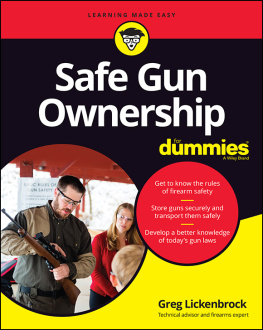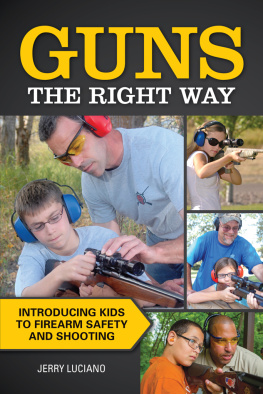

Published by Redleaf Press
10 Yorkton Court
St. Paul, MN 55117
www.redleafpress.org
1997, 2006, 2014 by Connie Jo Smith, Charlotte M. Hendricks, and Becky S. Bennett
All rights reserved. Unless otherwise noted on a specific page, no portion of this publication may be reproduced or transmitted in any form or by any means, electronic or mechanical, including photocopying, recording, or capturing on any information storage and retrieval system, without permission in writing from the publisher, except by a reviewer, who may quote brief passages in a critical article or review to be printed in a magazine or newspaper, or electronically transmitted on radio, television, or the Internet.
First edition published 1997. Second edition 2006. Third edition 2014.
Cover design by Jim Handrigan
Cover photograph by Blend Images Photography/Veer
Interior design by Percolator
Typeset in Stone Informal, Matrix Script, and Trade Gothic
Illustrations by Chris Wold Dyrud
Library of Congress Cataloging-in-Publication Data
Smith, Connie Jo.
Safety / Connie Jo Smith, Charlotte M. Hendricks, Becky S. Bennett. Third edition.
pages cm (Growing, growing strong : a whole health curriculum for young children)
Summary: The earlier children learn about safety, the more naturally they will develop habits that lead to lifelong patterns of safe behavior. These activities introduce topics such as seat belt use, fire and burn prevention, and tobacco and alcohol awareness in developmentally appropriate ways to help children take care of themselves. Provided by publisher.
ISBN 978-1-60554-333-8 (e-book)
1. Childrens accidentsPrevention. 2. Safety education. I. Hendricks, Charlotte M., 1957- II. Bennett, Becky S., 1954- III. Title.
HV675.72.S56 2013
372.37043dc23
2013021775
To the memory of my parents, Nevolyn and George. My mother taught me that a sense of humor is an essential life skill, regardless of age. My dad taught me the importance of love and independence.
Connie Jo
To Gayle Cunningham for guidance and friendship, and to Don Palmer for always being there for me. And in memory of Nic Frising for showing the humor in life through art.
Charlotte
To the memory of my parents, Charlie and Jeanette, who gave me life, love, and encouragement to follow my dreams. And to my partner, Connie, who has taught me so much about the early care and education field, love, and family.
Becky
Contents
We would like to express heartfelt appreciation to our talented, hardworking, and ever-positive editor, Kyra Ostendorf. This book is much richer for her ideas, guidance, and smilesthose given in person and those that arrived through electronic communication ;-). Thanks to Elena Fultz and Grace Fowler, interns at Redleaf Press , who assisted in technical editing. We are grateful to David Heath for his initial editing support and encouragement. And, of course, we want to acknowledge all the individuals we have had professional encounters with over the years, as each contact has helped us grow and has enhanced our work.
Children deserve to live and play in safe environments. Adults have the responsibility to keep children safe; children should not be expected to actively protect themselves. Safety education helps young children develop awareness for a safer life and realize that they can control some aspects of their safety through certain actions. Safety education also helps young children develop skills for safe actions and understand possible consequences of unsafe behavior. The earlier children learn about safety, the more naturally they will develop the attitudes and respect that lead to lifelong patterns of safe behavior.
According to the Centers for Disease Control and Prevention , unintentional injury is the leading cause of death in children (and adults to age forty-four). Because childrens cognition is developing, many cannot consistently identify dangerous situations. Also, they often act impulsively, without stopping to consider danger. The goal of safety education, then, is to help children develop safety awareness and learn that they can control some aspects of their safety.
Teach safety in a way that does not frighten children but helps them learn steps to take care of themselves. Help children realize that they can control some aspects of their safety; for example, safe play may prevent injury. Explain that they can make choices to stay safe, just as they wash their hands to prevent disease, and brush their teeth to prevent cavities.
This curriculum will introduce children to lifelong habits that promote safety. Children will gain a higher measure of confidence as they learn about safety and begin to incorporate actions into their lives that make them feel safer. Topics include pedestrian safety, use of seat belts, fire and burn prevention, weapons avoidance, poisoning prevention, and tobacco and alcohol awareness.
Each chapter covers one topic and starts with an overview that includes suggested interest area materials, learning objectives, vocabulary words to introduce and use (which should include vocabulary words in the languages spoken by the families of children in the class), supports for creating the learning environment, and suggestions for evaluating childrens understanding of the topic. The overview is followed by activity ideas. Icons appear with each activity to identify the areas of development and learning integrated into the activity:

Each chapter concludes with a family information page and a take-home family activity page, both of which can be photocopied from the book and distributed to families. These pages can also be downloaded from the Growing, Growing Strong page at www.redleafpress.org for electronic sharing or printing.
INTEREST AREA MATERIALS
Dramatic Play
many kinds of hats and helmets
belts and belt hanger
luggage cart and tie-down
reflective clothing
baby or doll stroller
car safety seats and booster seats
doll high chair with safety strap
flashlights
cellophane paper (red, yellow, green)
empty fire extinguisher without pin
battery-operated candles
rolling pins
bladeless fan
centerpieces
tablecloth
empty, clean rubbing alcohol containers
no-smoking sign
Blocks
many kinds of toy vehicles (fire trucks, buses, trains, airplanes)
toy people to be pedestrians
traffic signs (Stop, Yield, etc.)
road play mat/carpet
string, rope, leather lacing, and yarn
belt buckles for hauling
car garages
small exit signs to use in building
small tornado shelter signs to use in building
Table Toys
transportation puzzles
emergency-related puzzles
building sets with wheels
playhouse vehicles and traffic signs
lacing cards
belts to fasten and unfasten
electric train set
race car set
tabletop road play mat and vehicles
Art
toy vehicles to roll tires through painting
green, yellow, and red paint
green, yellow, and red paper
fluorescent tempera paint
tools that require caution (stapler, scissors, tools to work with clay)
old belts to cut and glue
string, yarn, and rope pieces
clay and photographs of candleholders
buckles to make paint prints
Next page









